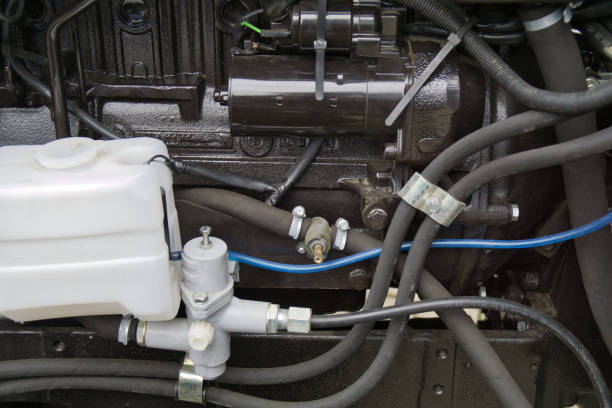In the ever-evolving landscape of automotive engineering, few innovations have left as profound a mark as turbochargers. These compact yet mighty devices have reshaped the way we perceive engine performance and efficiency, propelling vehicles into a realm of unprecedented power and fuel economy. As we stand at the precipice of a turbocharged tomorrow, it’s essential to explore the cutting-edge advancements and transformative potential of turbo technology. This article embarks on a journey through the dynamic world of turbochargers, uncovering the latest innovations, applications, and the promising future they hold for the automotive industry.
A Legacy of Innovation: Turbochargers Through the Ages
The roots of turbocharger technology trace back to the early 20th century, with visionary engineers pioneering the concept of forced induction to enhance engine performance. Over the decades, turbochargers evolved from niche applications in aviation and motorsports to mainstream adoption in passenger cars, trucks, and industrial machinery. Today, turbochargers stand as icons of engineering ingenuity, driving a revolution in automotive performance and efficiency.
The Science Behind the Boost: How Turbochargers Work
At the heart of turbo technology lies a simple yet ingenious principle: harnessing exhaust gas energy to compress intake air and increase engine power output. Turbochargers consist of two primary components: the turbine and the compressor, connected by a common shaft. As exhaust gases pass through the turbine, they spin it at high speeds, driving the compressor wheel to force more air into the engine’s combustion chambers. This compressed air allows for more fuel to be burned, resulting in increased power and torque without a significant increase in engine size.
Pushing the Limits: Innovations in Turbocharger Technology
In recent years, turbocharger technology has undergone a renaissance, driven by advancements in materials, aerodynamics, and electronic controls. Key innovations shaping the future of turbo technology include:
Variable Geometry Turbos (VGT): These turbos feature adjustable vanes that optimize airflow and boost pressure across a wide range of engine speeds, reducing turbo lag and improving overall efficiency.Electric Turbochargers: By incorporating electric motors to spool up the turbo independently of exhaust gases, electric turbochargers eliminate traditional turbo lag, delivering instantaneous power and responsiveness.Twin-Scroll Turbos: Utilizing separate exhaust gas inlets to the turbine, twin-scroll turbos improve energy delivery and reduce exhaust gas interference, enhancing engine efficiency and performance.Turbocharged Applications: Driving Innovation Across Industries
Turbochargers find application across diverse industries, each benefiting from their unparalleled performance and efficiency:
Automotive: In passenger cars and commercial vehicles, turbochargers enhance power output, improve fuel efficiency, and reduce emissions, aligning with global trends towards electrification and sustainability.Aerospace: Turbochargers power aircraft engines, providing the thrust needed for takeoff, climb, and cruise, while optimizing fuel consumption and flight range.Marine: In marine propulsion systems, turbochargers ensure efficient power delivery, enabling vessels to navigate the oceans with speed and reliability.Industrial: Turbochargers drive industrial machinery, generators, and power plants, delivering consistent power output and maximizing productivity.Charting a Turbocharged Future
As we look ahead, turbochargers are poised to play an even more significant role in shaping the future of transportation and energy:
Hybridization and Electrification: Turbochargers will integrate seamlessly with hybrid and electric powertrains, enhancing efficiency and performance while reducing emissions.Advanced Materials and Manufacturing: Continued advancements in materials science and manufacturing techniques will result in lighter, more durable turbochargers capable of withstanding higher temperatures and pressures.Smart Integration: Turbochargers will leverage artificial intelligence and data analytics to optimize performance in real-time, adapting to changing driving conditions and driver preferences.Conclusion: Accelerating Towards a Turbocharged Tomorrow
Turbo technology has come a long way since its inception, evolving from a niche curiosity to a mainstream powerhouse of automotive engineering. As we stand on the cusp of a turbocharged tomorrow, the possibilities are limitless. With innovations in turbocharger technology driving performance, efficiency, and sustainability, the future of transportation promises to be faster, cleaner, and more exhilarating than ever before. As engines evolve and technologies advance, one thing is certain: the turbocharged revolution is just getting started.


